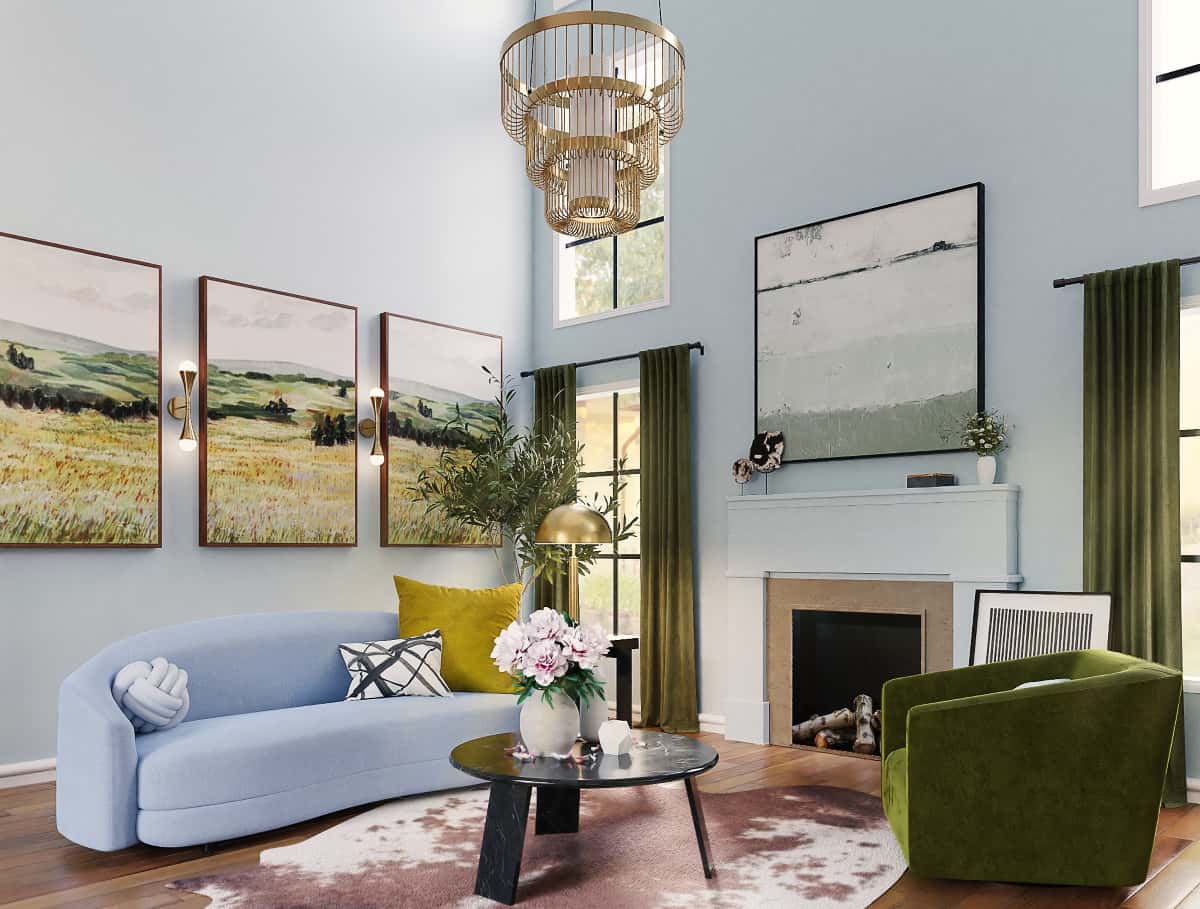
Oversize rooms are great because there's so much space.
And oversize rooms have their drawbacks because there's so much space. The trick to handling tall walls is a design that balances the extra height and injects some warmth into the room to make the space cozy and inviting.
Assess the Space

Take a good, hard look at the space and consider its uses. Does the area need to be made functional with bookcases and shelves, or is it crying out for artwork?
Next, how does it feel? Cold and bare? Bottom-heavy? Weirdly un-put-together? And finally, how do you want the space to feel? Comfy cozy? Majestic and imposing?
When you have your answers, it's on to the next step.
Solid Wall Color Paint?

A common mistake is using the same blah paint color for the walls and the ceiling, making a room feel cold and bare.
Many people choose a monochromatic look for rooms with high ceilings because it's easier to paint in all one color.
Resign yourself to the fact that you will probably need to hire a painter that uses tall ladders or scaffolding to paint high spaces.
Warm shades such as rich gold or terra-cotta are ideal for small rooms with tall ceilings. If the room is more expansive and open, try dramatic shades such as brick red, eggplant, or chocolate-brown.
But neutrals are an attractive option too. Just choose a deeper shade than the ceiling color for your walls, such as a charcoal-gray instead of dove or taupe instead of beige.
And we're not ruling out painting the ceiling to match the walls because it gives the impression of a lower ceiling, so the walls' height isn't as obvious.
How About a Wallpaper or Painted Pattern?

You can also use paint to create the illusion of shorter walls and a cozier space by painting 4-inch to 12-inch horizontal stripes in two or three alternating colors from the same color family across a towering vertical wall.
If you don't like the look of horizontal stripes, you can also use a chair rail to help draw the eye and widen the room.
Paint the chair rail in a neutral shade such as white, cream, or tan, and use a darker shade for the wall below the rail. On the upper portion of the wall, choose a lighter shade from the same family as the lower wall color.
And wallpaper is a great way to create visual interest from floor to ceiling.
Remember that there will be more distance between the viewer and the walls, so pick a bold pattern.
Pictures and Plants

This is no place for delicate prints and small floor plants. Go big or go home.
Over-sized framed prints or canvasses take up a significant amount of wall space, diverting the focus away from a soaring wall. Murals work well in large wall spaces without looking cramped and out of place.
Or create a gallery by lining up a horizontal display of similar-themed pictures across a tall wall to break it up visually. (But leave space in between!)
Use photos or artwork that are all the same size and place them in the same color and style frames. When it comes to hanging the pieces on the wall, go for a symmetrical look.
If you only have three to five items, you might hang them in a row. If you have six or more, create a grid-style display to fill the wall.
Place a large potted palm or ficus tree in a corner to add energy, color, and aesthetic appeal. You can also nestle a large plant against the end of a tall, vertical bookcase to help anchor it and divide the wall space.
Furniture and Accents

When furnishing your vertical space, think tall. Choosing pieces that are too small only emphasizes the walls’ height and covering the entire surface with many small pieces can make it look cluttered and messy.
Built-in bookshelves and cabinetry add permanent storage and display areas to a room without taking up much floor space. (And they're sturdier, too.)
Freestanding armoires, entertainment centers, and media cabinets that stretch upward add practical efficiency to vertical space. Floating wall shelves can also provide a place to display photographs, books, statues, and vases.
Position potted greenery and colorful pottery atop furniture pieces to add a decorative element. Lastly, a decorative chandelier will convey an upscale feel and create an illuminating diversion from soaring walls. Hang it with the bottom edge hanging no lower than 7 feet from the floor.
Now go turn your room with tall walls and soaring ceilings into the perfect living space.



